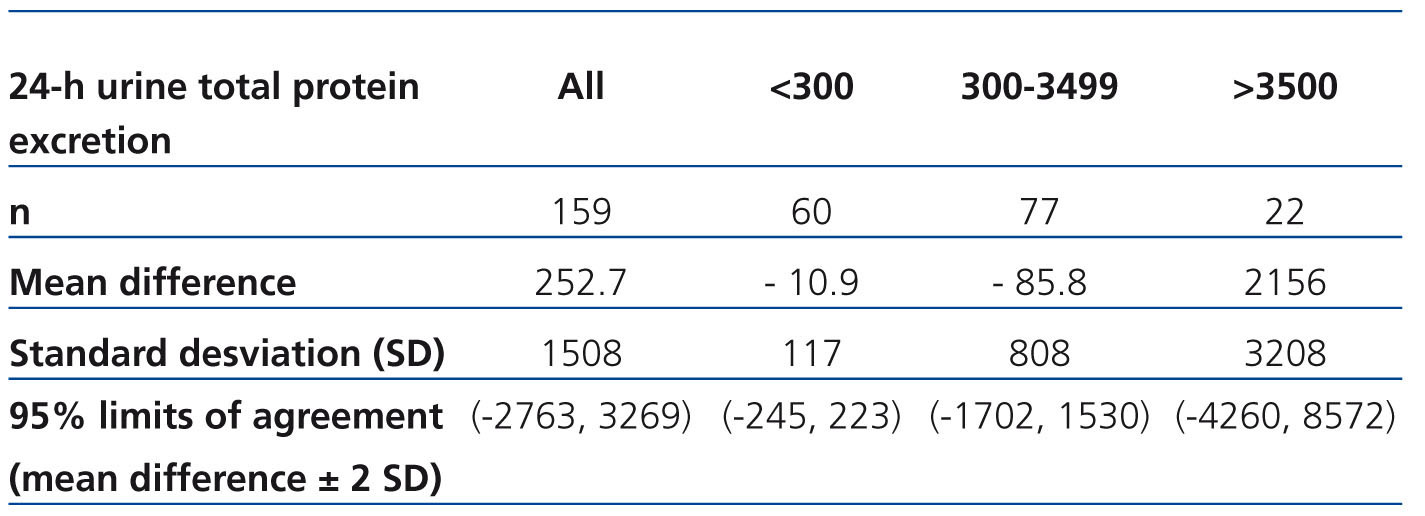Dear director,
We want to thank Dr. Donal his very useful comments.1 With great interest we have reflected on them. He is absolutely right when he claims about the lack of comments from us about relevant data such as the numerical 95% limits of agreement in the Bland-Altman plot. The results for all the samples and for the specific thresholds are shown in the table. Of note that the limits of agreement are wide, reflecting the great variation of the differences.
Dr. Donal expressed certain misgivings regarding the use of intra-class correlation coefficient (ICC) and Spearman correlation coefficient (SCC) because, from his point of view, they assess the correlation rather than measuring the agreement. We agree that a strong correlation does not mean that the two methods agree. Regarding his remarks, first of all, a clarification of the basic concept of intraclass correlation coefficient seems worth mentioning. The ICC is viewed as a type of correlation, it assess the consistency or reproducibility of quantitative measurements made by different observers/methods measuring the same quantity or agreement between two numerical variables.2,3 We think that in our study, it seems appropriate to show also the ICC results in addition to the Bland and Altman plot, as it has been done in previous publications. As the results are in agreement with the Bland and Altman plot, we surmise that this approach brings more information. However, as suggested we now added the 95% limits of agreement for clarifying the results.
Conflict of interest
The authors declare that there is no conflict of interest associated with this manuscript.
Table 1. 95% limits of agreement in the Bland-Altman plot








